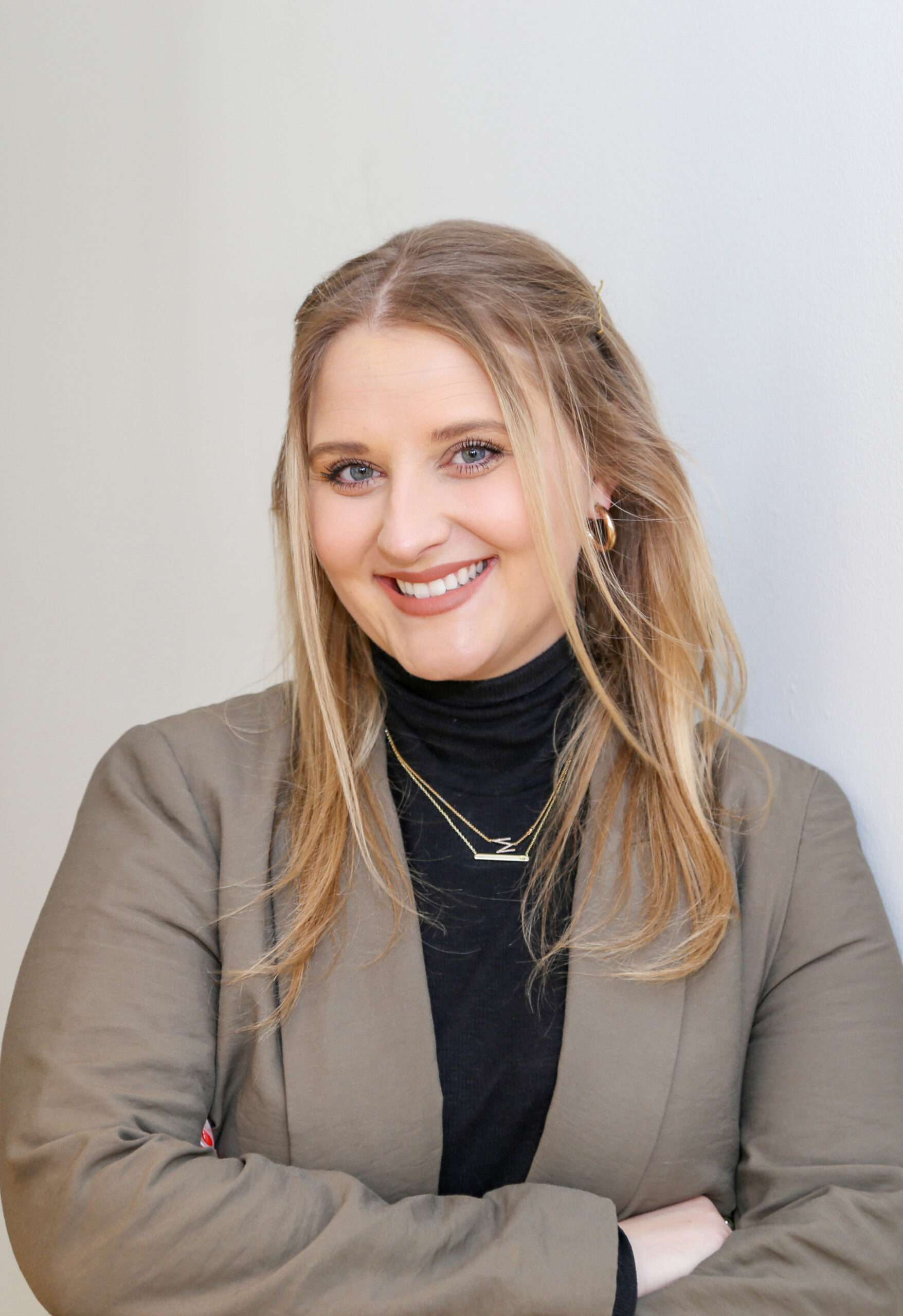As freelancers, we’re always learning. (Cue “the journey never ends…” quotes.) But in all seriousness, Andrea and Samantha know this first-hand having been on all sides of the freelance journey.
Not only have they been freelancers themselves, and are very familiar with riding that freelance roller coaster, but they’ve also hired freelancers while working in-house. Now they’ve taken all those lessons and turned them into Harlow, an all-in-one freelance tool designed to help freelancers streamline their business and alleviate stress.
Today they’re sharing all their biggest lessons. But, before we jump into the interview, here’s what you need to know about these two freelance queens.
Andrea Wildt has freelanced three different times in her career. She was an early Salesforce employee, the CMO at Campaign monitor, and is an expert in operations and demand gen.
Samantha Anderl was a first-time freelancer after leaving Campaign Monitor, where she was Head of Marketing. She spent four years freelancing before building Harlow with Andrea.
As you can tell, these ladies have a lot of experience to share, so let’s skip to the good part… (All our Instagram Reels junkies know this reference!)
We're always learning on this winding road we call freelancing.
1: What’s one important lesson you learned while trying to figure out who your ideal client was?
AW: Early on in my freelance career, I would take on almost any project that came my way. I know so many freelancers can probably resonate with this. My ideal client was one who had a job to be done and could pay me! The challenge with that approach, as easy as it was, is that I wasn’t necessarily applying my learnings from one client to the next since they were so different and every project was bespoke.
When Samantha and I founded Interimly, we found that by focusing on a specific type of client, we could deeply immerse ourselves in that stage of growth and bring more to the table for future clients. And this was SO much more fulfilling. While each project still had a very custom deliverable, we deeply understood the stage they were in and the unique challenges that they faced being an early-stage company with high growth targets.
Nailing down an Ideal Client Persona (ICP) like this, rather than just taking what hit our inbox, helped us to create some repeatable processes and frameworks that better served our clients—and us too. If you’re like us, you love processes and this was a big part of creating those juicy workflows.
SA: When Andrea and I first started Interimly, we knew the services we wanted to offer, but weren’t sure about the size of the company we wanted to work with. We had just come from a 200M company and knew we could help an organization of that size, but quickly realized something incredibly important: we didn’t actually want to.
Too many stakeholders made it difficult to get things done and we wanted to be nimble so we could have a greater impact for our clients. So then we went the other direction: working with brand new companies that didn’t have any marketing structure set up at all.
This brought its own set of problems (insert face palm emoji) because we didn’t always have a point of contact or a person on the team who understood the value of marketing or the resources to get things done. If you’ve been there before, you know this makes it very hard to do your best work.
Luckily, we found that our sweet spot was actually right in the middle: working with early-stage companies that had a marketing lead already. This gave us the right point of contact so we were able to have the impact we knew we could.
Overall, we had to learn from projects that weren’t as fulfilling to figure out what an ideal project and client looked like. #Alwayslearning, right?
2: What did you learn about communication in your years of freelancing?
AW: I learned early on that the best way to make a client happy is to do what you say you’re going to do. It sounds so simple, but not all freelancers (or employees, for that matter) do this. For me, this means being crystal clear in the statement of work about the parameters of the project. Putting everything on paper is key!
Actual deliverables and timelines, along with how and when you will meet with them, should be documented upfront and agreed upon before you start the project. This provides you with a very clear document that you can reference if things start to go sideways and get out of scope. It also acts as a handy reminder to keep you on track!
SA: One thing I had a difficult time with was figuring out the communication channels that worked best for me. With email, Slack, other chat tools, meetings—it can be so overwhelming managing it all! I made the mistake early on of always meeting my clients where they wanted to communicate.
That often meant being in my client’s Slack channel where the expectation was quick and immediate responses at any point during the day—which I was not here for. I had to remind myself that I was in control of my path, and could restructure how and where I communicated with clients based on what worked best for me.
So I shifted to outlining communication channels up-front and discussing expectations with clients so we were aligned out of the gate on where and how we would be communicating.
I also learned easy responses when communication was too frequent or difficult to manage. Phrases like, “Let me get back to you on this” or “This would be more productive to chat through in-person, here’s my availability” became staples.
3: Pricing is SO hard! What have you learned about pricing?
AW: The biggest learning for me here is that it’s okay if you’re “too expensive” for some clients. Even more importantly, it’s okay to not take every project. Honestly, as you progress in your freelance career, your expertise and value do become greater and that means not everyone is going to be able to afford to bring you on. That’s a good thing, it’s how you grow and scale your business!
I also want to remind you of another important lesson I had to learn: it’s okay to get pushback on pricing. If you don’t get push-back, that probably means you’re not charging enough. (If you’re struggling with this, check out our guide on how to figure out your pricing!)
SA: When we first started out, we charged hourly for our services and that was a nightmare. We had to keep track of our hours closely, and worse, do a lot of justifying around what we were spending our time on.
So we made a big decision in our first year of freelancing to switch over to project-based pricing. What a relief! This switch not only allowed us to sell our value early on—and not fight for our pay by the hour—but it also allowed us to charge more for the services we were offering. And to be honest, we got WAY less push-back!
It may be hard to shift to project-based pricing if you aren’t confident in the value you offer, or are worried about clients fighting it. We totally get that! But we really learned to trust our gut on this.
Remember that pricing is a journey. You may not get it right the first time, but you can always tweak as you go.
P.S. We also created a pricing guide to help you along the way!
4: How did you learn to own your schedule and manage your time (and boundaries!) as a freelancer?
AW: I’ll be the first to say, this is not my strong suit! I’m very much a people pleaser and have a tendency to agree to meetings even when they’re not convenient for me, just to make sure the client is happy. (And it’s exhausting!)
Having a child during the pandemic really forced me to create stronger boundaries since I couldn’t be available all the time. A great tool for creating these boundaries with clients upfront is the statement of work that I talked about earlier. Letting clients know when and how to communicate with you upfront really does reduce a lot of the issues with scheduling during the engagement.
SA: I went into freelancing because I wanted more flexibility and greater control of my schedule. Yet my schedule quickly got out of hand when I started freelancing. As I mentioned earlier, I was often letting clients dictate when and where we connected and that left my calendar scattered.
To fix this problem, we started scheduling all of our meetings on one day of the week. This sounds so simple (and it is), but scheduling all our calls on Tuesdays gave me the rest of my week to strategize and execute on client work. More importantly, it gave me space for self-care, and time with friends—more opportunities to truly fill my cup so I could be a better freelancer for my clients and myself.
The best part is that anyone can do this. Try scheduling all of your meetings on one or two days of the week and see how much more you can get done when you have uninterrupted work and free time.
5: Generating new business is so important. What have you learned about drumming up new clients?
AW: Our business, Interimly, was based largely on referrals and our network. Specializing in early-stage SaaS also allowed us to build relationships with some VC firms that would introduce us to their portfolio companies when they had needs we could solve.
I would also like to stress that a lot of our business came from referrals from other freelancers—the power of community is immeasurable as a freelancer! Creating a mutual referral relationship with your peers can be wildly beneficial.
SA: Don’t be afraid to ask for referrals! We always asked our clients at the end of projects to please recommend us to anyone they knew in their network looking for a similar project. We know this can be so hard to do—cue that squeamish, uncomfortable feeling of asking for something! Trust us on this: it’s worth it. Sometimes you have to remind people to refer you out, and at the end of a project, especially when it ends on a high note, is always the perfect time to do that!
So Many Lessons Learned—and Still Learning
Andrea and Samantha have learned so much during their freelance careers. As we all know, it’s an ever-evolving journey—and there are still plenty more lessons for them to learn along the way. If you want to accompany them as they navigate the ups and downs and turnarounds, follow along on Twitter, @meetharlow, @samanthaanderl, @thelittlestflea, on Instagram, @MeetHarlow and @samanthaanderl, or on LinkedIn, Harlow or Samantha’s profile.




